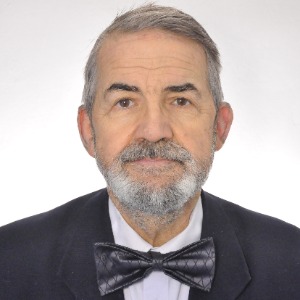Title : Hirudotherapy New possibilities for the treatment of movement disorders
Abstract:
Annotation: According to the global burden of disease study published by WHO, approximately 1.71 billion people worldwide suffer from disorders and diseases of the musculo-skeletal system. The prevalence of these diseases varies depending on age and diagnosis, but they affect people of all ages everywhere in the world. Diseases of the Musculoskeletal System (MS) cover a wide range of disorders affecting joints, bones, muscles, and soft tissues. Many MS diseases are recurrent or lifelong. The main consequences of MS diseases are usually prolonged pain, physical disability, loss of independence, decreased social interaction, and deterioration of quality of life. According to a publication by an international group of researchers (Sweden, USA, UK), based on WHO and UN data, between 1986 and 2011 (a period of 25 years) the total number of deaths from diseases of the musculo-skeletal system and their share in the total number of deaths increased, and this was mainly due to the aging of the population. Kiadaliri, A.A., Wolf, A.D. and Englund, M. “Diseases of the musculoskeletal system as the main cause of death in 58 countries in 1986-2011: An analysis of trends in the WHO mortality database.” BMC Musculoskeletal Disord. 18, 62 (2017)”. The highest mortality rates from diseases of the musculoskeletal system were observed in Central America, and the lowest in Eastern Europe. The increase in mortality rates from diseases of the musculoskeletal system in Southern Europe, the Caribbean, Central America and South America over the past decade requires further action. The authors of this publication did not take into account the endotoxification factor and its effects on the Human Connective Tissue System (HCTS), as the author of this report reported in Rome: Krashenyuk A. I. Endoecological poisoning of the World's population. A new clinical indicator has been introduced-"Integral Blood Toxicity". "8th International Conference on Traditional Medicine, Ethnomedicine and Natural Treatment Methods", 5-7 June 2025, Rome, pp.66-67. Let's take a closer look at the problem of Cerebral Palsy (CP) and the consequences of stroke. The lesions of the MS were new and unexpected, as complications of the "postcovoid syndrome". In these diseases, we observe pronounced lesions of the MS. Our 30 years of experience in using the original medical leech treatment technology has allowed us to obtain unique treatment results for these diseases. This technology is called the "System Method of Leeching" (SML) and is protected by a patent (RF Patent No. 2787525). Some of these results have already been published, these are priority publications, and some are still awaiting publication: Krashenyuk A.I., Krashenyuk S.V. Hirudotherapy as a method of rehabilitation of children suffering from cerebral palsy. International Journal of Immunoreabilitation, 1997, No. 4, 118 p.; Krashenyuk A.I. Neurotrophic (neurostimulating) and neurotransmitter effects of hirudotherapy. The pathogenetic mechanism of treatment of 62 ICTM 2025 diseases of the human nervous system. Acta Scientific Medical Sciences 4.3 (2020): 01-06.; Krashenyuk A.I., Burkhonov A.B. Aseptic necrosis of joints as a complication of “postcovoid syndrome" (clinical case). Journal of Clinical Research, Reviews and Reports, 2022, Vol. 4(3): 1-6. These clinical results are based on new scientific facts about the biological and medical properties of Hirudo medicinalis medicinal leeches. Let's briefly focus on one of them, and perhaps other new facts can be reported in the report. In 1994, in the Russian Federation, the film "treatment of cerebral palsy" was shown on the federal TV channel No. 5. The heroes of the film were 3 boys, two of them were 6 years old and one was 11 months old. This film shows the results of treatment of cerebral palsy by hirudotherapy. The author of the original treatment method was Dr. Krashenyuk A.I. The most emotional shots of this film are shots about relieving spastic muscle tension in children and the possibility of canceling the "Ballerina's Foot" symptom. This phenomenon allowed children to avoid complex surgical operations such as orthotics or verticalization. The film caused a positive public response, and it can still be viewed on our website: Academia-hirudo.ru. Almost 30 years have passed since the screening of this film, but its name still remains unchanged: "Cerebral palsy is treated only in Russia with medical leeches." In 1996, we patented the discovery of the neurotrophic effect of the medicinal leech (RF Patent No. 2144698. Priority of March 14, 1996). And only 3 and 5 years later, in the laboratory of Professor I.P. Baskova, it was confirmed that 3 of the components of the medicinal leech secretion known at that time: Destabilase-M, bdellin and bdellastazine-B have neurotrophic and neuritis-stimulating effects (two publications). It is these components of leech secretion that are associated with the phenomenon of relieving spasticity in children diagnosed with cerebral palsy and in adults suffering from muscle spasticity after a stroke.



